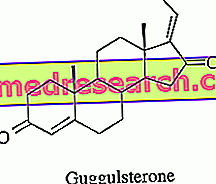Edited by Ivan Mercolini
Presentation
Good morning or good evening to all.
In today's lesson, we will analyze the various weight training exercises on the side of acute or wear trauma potential.
The text will be structured as follows: taking each exercise, I will show in detail all the execution errors that can be made, limited to those that could cause injuries.

Ivan Mercolini>
- author of the article -
The purpose is clear: to avoid getting hurt allows you to train better, for longer, avoiding periods of forced rest which, in addition to bargaining and loss of tone, can lead to disinterest and abandonment.
And how many of you follow us on our. site, they know how important physical activity is for both beauty and well-being.
Some reflections deserve to be premises. Meanwhile it must be clear that for any exercise the risk of joint trauma is greater the more it is aimed at strength and is less the more it is aimed at resistance. That is - and it is a rather intuitive concept - the greater the load that is raised in proportion to one's strength and the greater the risk of trauma. Therefore the potentially most dangerous cycles are those of strength / power, those least dangerous (but not exempt) are those of resistance. A further distinction could be made. It can be said that statistically - and always logically - the most common traumas in strength routines are acute in nature, while those most common in resistance cycles are wear. This happens because the exercises carried out in resistant force use relatively light weights that, in case of incorrect execution, do not immediately overcome the resistance of tendons and ligaments with the creation of the traumatic event, but stress these structures with the appearance of the lesion in the time, following reiteration. The above should not lead the reader to conclude that it is better to train in resistance than in strength. Absolutely not. Instead he must convince himself to concentrate on the correct execution during the conditioning phase, so that, once he has reached the effective phase, the correct execution is now spontaneous, allowing him to concentrate only on intensity.
And yet another reflection ... the traumatological analysis of the exercises is not for you a reason to make the routine an academic discussion with so much chatter and few facts. One of the errors that context the federations is to "churn out" instructors with their heads full of notions and syllogisms, even of emptiness to say about the genre of the "sex of angels" so to speak, but which in practice do not even succeed on themselves to obtain a physique superior to a sedentary one. In the weight room, next to a subject who performs a series, there are at least two who discuss about the execution, about the muscles involved, about the history of the exercise, about that and that other ... how good these jugglers of words, who reproach you for errors and seek with their own wisdom to give themselves a tone, failing to give it to themselves with the results. But then Mr. MT Mercolini, how should we use this lesson correctly? The correct use of the following lies in its application limited to the conditioning phase; after which, from that point on, your work, your mind, is aimed at fatigue, intensity, content, and not by fanaticism, but because objectively that is the only way to get serious results.
In short, the culture in the field of bodybuilding, fitness and body aesthetics will not build anything on you unless it is applied with hardness, discipline and effort. So leave the personal training philosophers to write entire volumes, loaded with poetic notes about the squat and the deadlifts; you instead dedicate yourself to the exercises with commitment, tension and perseverance as we have already discussed in the previous lessons (in particular in "Improving the male aesthetics", "Improving female aesthetics", "Heavy Duty"), taking care of the precautions that will follow . Finally, there is no doubt that the risk of getting hurt will still exist, if not for you, perhaps due to a slipping disc or a misplaced handlebar. But if you want to avoid any risk, then you just need to play three-seven at the bar, don't you think?
Ah, one more note: it is understood that regardless of the exercise, each movement is at risk of being torn if a short preparatory warm-up is not carried out. Even the first two repetitions of the first series of each exercise should be performed with greater slowness and control.
Short glossary on the Terms
In order to make my exposition clear to non-professionals, let's try to understand the meaning of some keywords. DISTORTION means a lesion against the ligaments. They are caused by a movement, an action that goes beyond the normal range of excursion, or by strains on a plane where normally there is no or almost no movement. An example of the latter is the classic lateral ankle distortion. A distortion of a discrete entity always carries with it a partial subluxation. We speak instead of RIP when the lesion concerns a complex tendon muscle. And it can occur here at any point: in tendons, at the level of muscle tendon insertions or at bone insertion level. The tear is caused either by an excessive stretching of the muscle, or by a sudden and sudden increase in tension within the muscle-tendon system, with consequent laceration. In the vast majority of cases, however, the tears occur within the normal articular excursion, during the vigorous action of the muscle. Both distortion and tearing are acute traumas. Another example of acute trauma is the ARTICULAR LUSSATION and that is the displacement of the articulation heads with the loss of the relations of contiguity. It generally occurs due to an exogenous impact, which indirectly causes a wide laceration of the joint capsule and ligaments. The contusion that occurs due to the impact of an external body against the muscle with damage to the skin and underlying tissues is an acute trauma. This injury involves the rupture of capillaries, hemorrhage, edema and inflammatory reaction. The irritation of the nerve endings follows the pain.
FRACTURE is an acute trauma, which is defined by any loss of contiguity of a bone due to particularly violent bumps.
Finally, WEAR LESION means damage not caused by a traumatic event, but by the repetition over time of unnatural movements for the joint or, if in the normal range, by prolonged excessive stress. For example, we will see, the protracted execution of the hack squat can be etiological for an inflammation of the patellar tendon.
As we will see below, wear injuries are the most frequent in wrong executions in the weight room. Weight lifting will hardly lead to acute trauma, unless you make macroscopic errors, but we will also identify where these may occur.
Well, let's start the detailed analysis.
Inside individual exercises
| Click on the name of the individual Exercises to read the traumatic analysis |
Calf Raise Standing At Specific Machine |
Calf Raise Seated At Specific Machine |
Donkey Calf Raise With Companion |
Legs Extension to the Specific Machine |
Specific Machine Legs Curl |
Specific Machine Abducers |
Ground Abductors in Calistenica |
Rear Hubs On The Ground |
Rear Car Hitches |
Specific Machine Adductors |
Deadlift To Legs Tense |
Good Morning Exercise |
Extensions to the Bench Ghb |
Front lunges |
Lateral Lunges |
Hack Squat - Horizontal Press |
45 ° press |
Squat (squatting) |
Lifting From Bended Legs From The Ground |
Crunch And Inverse Crunch |
Sit Up And Sit Up At The Roman Bench |
Legs Raise |
Crunch At Lat Machine |
Stretching With Barbell Flat Bench or Inclined |
Crosses On Flat Or Inclined Bench |
Crosses Or Pushes To Cables |
Pushes To Parallel |
Ground Thrusts (Ground Loose) |
Crosses at the Pectoral Machine |
Pull Over With Handlebar Or Barbell |
Lateral Openings or Lateral Openings to Cables |
Lateral Openings Flexed Bust |
Horizontal Extensions Of Homers To Specific Machine |
Frontal Raises (Sagittal Bending of the Arms) |
Vertical Lift With Tight Barbell Or Vertical Rowing Or Bring To Chin |
Pushed With Dumbbells or Barbell Over La Nuca (or slow behind) |
Twist |
Deflection Of Seated Forearms |
Biceps Curl From Orthostatic Position With Barbell, Handlebars Or Cables |
Push-ups for the Forearms, Arms in the Cross, At Vertical Pulley |
Bending Of The Forearms To The Bench Larry Scott Or The Preacher |
Concentration Curl (Elbow Resting On Thigh From Seated Position) |
Biceps Curl in Orthostatic Position, Pronation Hands |
Extension / flexion of the wrists with barbell |
Forearm Extension to Vertical Pulley (Lat Machine), Pronation Hands |
Forearm Extension to Vertical Pulley Supination Hands |
French Press (Extension of Forearms With Barbell Stretched Out on Bench) |
Forearm Extension Over The Nuca With Dumbbells |
Folds Between the Benches |
Rower With Barbell Or Dorsey Bar |
Shrug |
Vertical Pulley Traction Hands In Supination Shoulders Width (Pull In Lat Lat Machine) |
Tractions At Lat Machine Prona, Avanti Or Behind La Nuca |
Pull-up At Lat Machine Tight Hold, At Chest |
Horizontal Pulley Traction Wide Or Narrow Grip, Supine Or Prona |
Pull Down (Sagittal Arms Extensions Al Lat Machine, Semitese Arms) |
Traction with handlebar, resting on the bench |
Pull ups |



